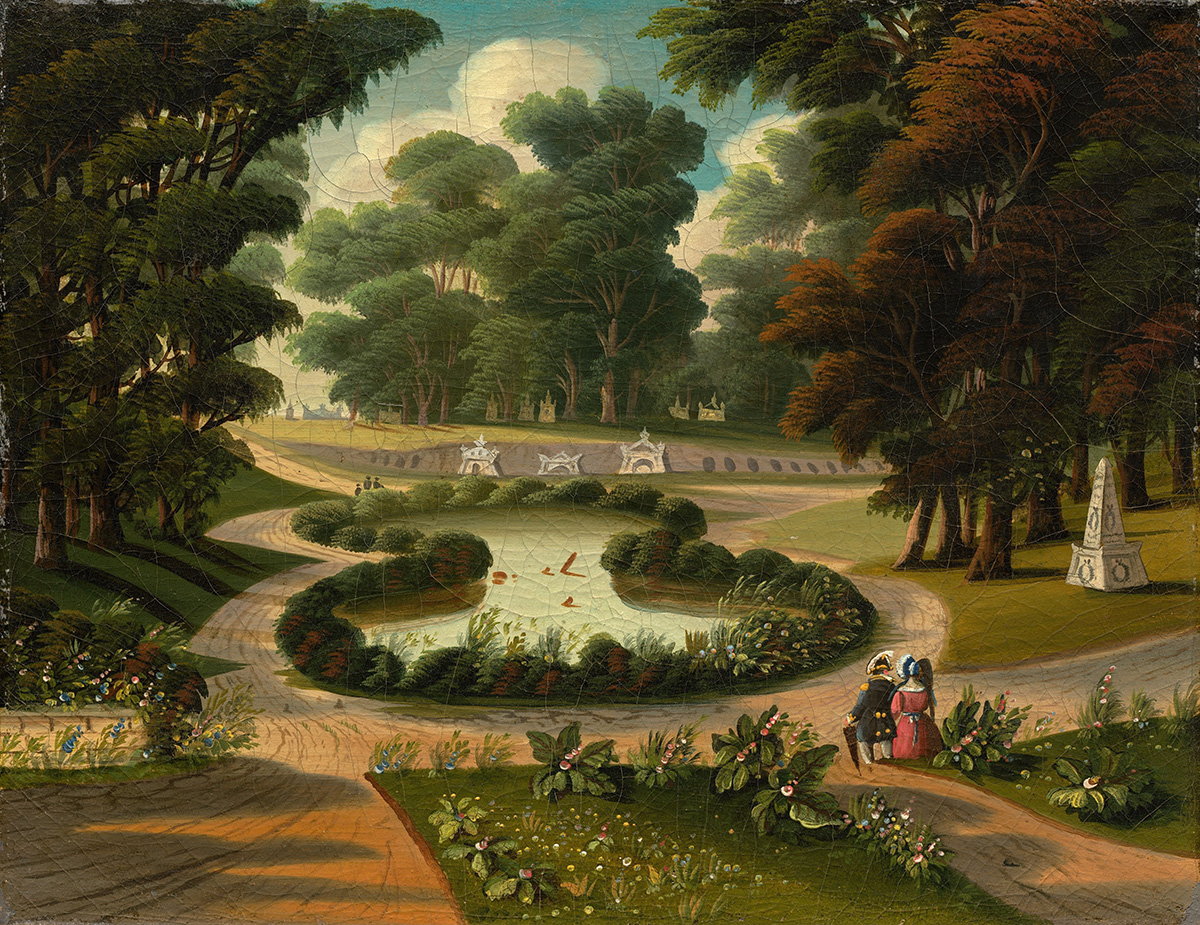Throwback Thursday: When an Experimental Garden in Cambridge Was Approved

A mid 19th-century Thomas Chambers painting of Mount Auburn Cemetery / Photo via Wikimedia/Creative Commons
On June 23, 1813, the Massachusetts Horticultural Society had a good day.
A few 203 years ago, the society was granted permission to buy land on the border of Cambridge and Watertown for an “experimental garden” and rural cemetery. The proposal for the land use was unusual at the time, but a Bostonian named Dr. Jacob Bigelow was determined.
According to MassMoments.org, Bigelow and other citizens raised concerns about Boston’s poorly maintained, crowded city graveyards. The notion of burying the dead outside of the city was startling to some, so Bigelow tried to work around Boston’s traditions. He roped the Massachusetts Horticultural Society into his idea, proposing that it manage the property. Bigelow’s rural sanctuary was approved—the land would be part experimental garden and part garden cemetery.
It was to be a peaceful spot, where large stretches of grassy land, trees, and plants would flourish. Skeptics were eventually won over by the Horticultural Society, which boasted the that Eden-like land would provide religious inspiration and encourage exercise. Less than 20 years later, enough plots were sold to make it official. In 1831, Mount Auburn Cemetery was consecrated.
Horticulturists ensured native plants thrived in the space, planting specimen trees and shrubs. Although paths and ponds were added to the landscape, the experimental garden part of the plan never took shape. Thus, the whole lot was reserved for the cemetery, and Mount Auburn Cemetery broke away from the Horticultural Society to become its own non-profit organization.
The cemetery was open to all races and religions, and became a popular choice for African Americans in Boston in the 19th century. It’s also where Bostonians like Mary Baker Eddy, Isabella Stewart Gardner, and Henry Wadsworth Longfellow are laid to rest.
Mount Auburn set the standard for rural cemeteries in the United States and helped to inspire public parks around the country. Today, the cemetery still upholds Bigelow’s natural, oasis-like vision, and contains more than 5,000 trees spanning 600 varieties.


